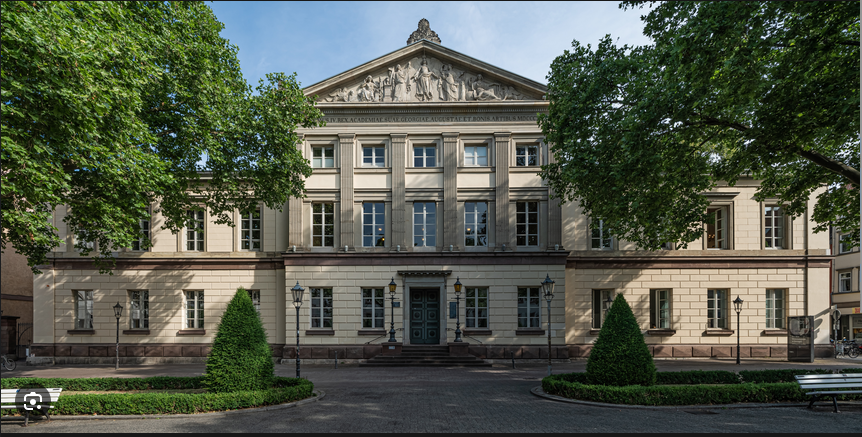Speaker
Description
Keywords: sustainable agricultural practices; technology adoption; urbanisation; climate change; panel data; Mundlak approach; India
Urbanisation is a global trend, which is expected to take place most rapidly in low- and lower-middle-income countries in Asia and Africa (United Nations, 2022). It is likely to result in major cropland and agricultural productivity losses (Bren d’Amour et al., 2017), and might foster an intensification of agricultural production. Agricultural intensification can also accelerate ecosystem deterioration (Cumming et al., 2014). Besides, climate change poses an increasing threat to agricultural productivity, especially in the Global South. In light of this, a shift of agricultural production systems away from a mere intensification of agriculture towards more sustainable production approaches is required. Sustainable agricultural practices are considered an approach to increase agricultural productivity whilst safeguarding the provision of ecosystem services and adapting to climate change (Godfray & Garnett, 2014).
We analyse how urbanisation affects peri-urban farmers’ adoption of sustainable agricultural practices. While some studies examine the implications of urbanisation for farm management decisions, literature on agricultural technology adoption and urbanisation has so far focused on conventional intensification methods (e.g., Steinhübel & von Cramon-Taubadel, 2020). Studies on farmers’ adoption of sustainable agricultural practices mostly focus on rural areas and employ cross-sectional data. We contribute to the literature in two main ways. First, we use a panel dataset from household surveys administered in the rural-urban interface of Bangalore, India, in 2017 and 2020. Besides urbanisation, we control for a wide range of potential influencing factors for farmers‘ decisions, such as weather variability, institutional factors and farm and household characteristics. Second, we measure urbanisation based on the percentage of built-up area in a 200-metre radius around the survey villages in the year of the household survey and are thus able to measure changes in urbanisation in the immediate surroundings of the farm households over time.
We employ random effects probit models to analyse the adoption of four categories of sustainable agricultural practices: water and erosion management (WEM), integrated pest management (IPM), soil fertility management (SFM), and an integrated package consisting of practices from all previous categories. Since the adoption outcome variables show relatively low within-group variation and we are interested in exploring the effects of various time-invariant independent variables, a random-effects estimator is preferred over a fixed-effects estimator. We use the Mundlak approach, which allows us to address concerns about time-invariant unobserved heterogeneity across farm households and thereby seeks to reduce endogeneity concerns (Mundlak, 1978).
We find that urbanisation, measured in terms of changes in the percentage of built-up area, is associated negatively with the probability of adopting sustainable agricultural practices (statistically significantly for IPM, SFM and the integrated package). The magnitude of the coefficient is rather small, as a one percent increase in built-up area is associated with a reduction in the adoption probability by 0.3 percentage points. Nevertheless, our findings indicate that urbanisation might already threaten the viability of farming due to the loss or fragmentation of land and water bodies and increasing uncertainties about the future of farmland, which might dis-incentivise investments into agricultural land. Possibly, urbanisation also increases labour costs due to higher wages, preventing farmers from adopting often more labour-intensive sustainable agricultural practices.
In line with prior literature, we find that weather variability, measured in terms of annual and seasonal rainfall, is an important determinant of farmers’ adoption decision. We find that market integration is positively associated with adoption, which corroborates the findings of prior studies. Our results show that this is especially true when farmers sell their produce through informal marketing channels, while selling through formalised marketing channels is negatively associated with adoption. We also find a negative association between the receipt of extension services and the probability of adoption, which is contrary to the findings of most prior studies and might be explained by our peri-urban setting. Finally, we find that wealth indicators are positively related to the probability of adoption, while increasing age and education of the main decision maker reduce the likelihood of adoption.
Further research is needed to examine the effects of urbanisation on adoption over longer time periods, across different stages of urbanisation and in different contexts. Future studies should also consider the integrated use of chemical farming inputs and sustainable agricultural practices in urbanising areas, as the integration of both might strike the required balance between agricultural intensification and resource conservation. In the Indian context, the future integration of resource conservation technologies in policies and training programmes seems imperative to achieve a sustainable intensification of peri-urban agriculture and to enable farmers to adapt to progressing urbanisation and climate change. Enhancing and re-focusing institutional support like extension services, enhancing information provision and facilitating market linkages can contribute to a more widespread adoption of sustainable agricultural practices in urbanising areas. Farmers in the most rapidly urbanising parts of peri-urban areas should be targeted to enhance their uptake of sustainable agricultural practices.
References:
Bren d’Amour, C., Reitsma, F., Baiocchi, G., Barthel, S., Güneralp, B., Erb, K.-H., Haberl, H., Creutzig, F., & Seto, K. C. (2017). Future urban land expansion and implications for global croplands. Proceedings of the National Academy of Sciences, 114(34), 8939–8944. https://doi.org/10.1073/pnas.1606036114
Cumming, G. S., Buerkert, A., Hoffmann, E. M., Schlecht, E., von Cramon-Taubadel, S., & Tscharntke, T. (2014). Implications of agricultural transitions and urbanization for ecosystem services. Nature, 515(7525), 50–57. https://doi.org/10.1038/nature13945
Godfray, H. C. J., & Garnett, T. (2014). Food security and sustainable intensification. Philosophical Transactions of the Royal Society B: Biological Sciences, 369(1639), 20120273. https://doi.org/10.1098/rstb.2012.0273
Mundlak, Y. (1978). On the pooling of time series and cross section data. Econometrica, 46(1), 69–85. https://doi.org/10.2307/1913646
Steinhübel, L., & von Cramon-Taubadel, S. (2020). Somewhere in between towns, markets and jobs – agricultural intensification in the rural–urban interface. The Journal of Development Studies, 1–26. https://doi.org/10.1080/00220388.2020.1806244
United Nations. (2022). World Population Prospects 2022. Summary of Results (UN DESA/POP/2022/TR/NO. 3). Department of Economic and Social Affairs, Population Division. https://www.un.org/development/desa/pd/sites/www.un.org.development.desa.pd/files/wpp2022_summary_of_results.pdf

